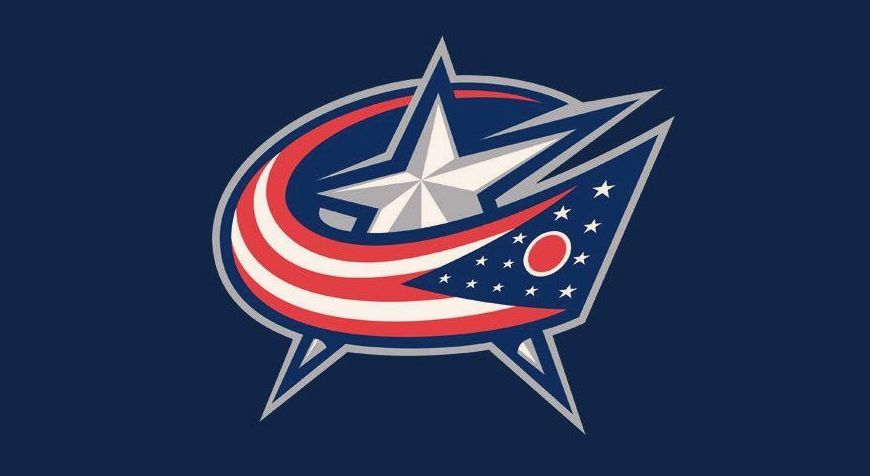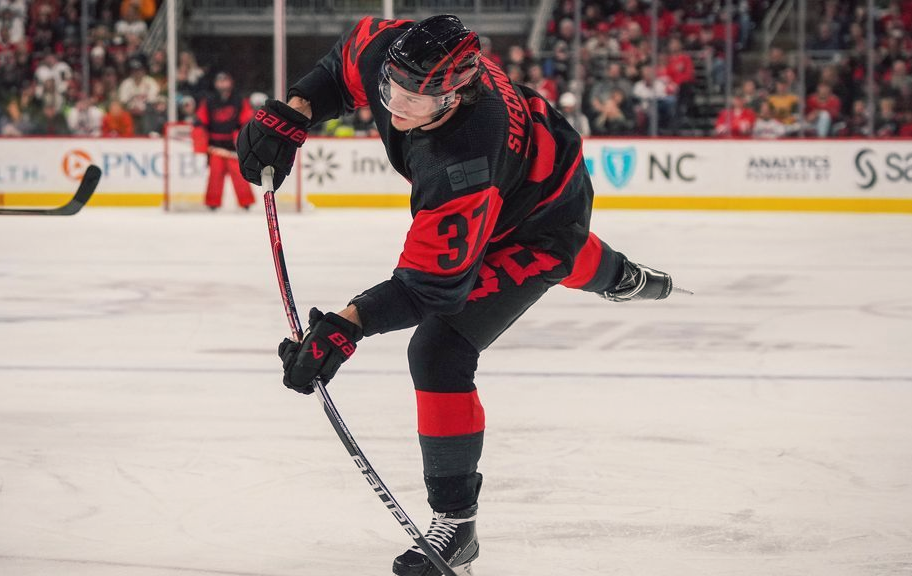Eastern Conference Final Preview
#2 Carolina Hurricanes vs #8 Florida Panthers

Ah, just as we all predicted: the midseason contender who everyone counted out after losing most of their offensive weapons to injury takes on the team that barely made the playoffs and was supposed to get swept in the first round, with the winner moving on to the Stanley Cup Final. This postseason has delivered more chaos than I ever could have imagined, and while jaded fans of Canadian teams flood Twitter with complaints about the success of non-traditional hockey markets, those of us who’ve been lucky enough not to have our brains rotted by front offices that mismanage assets and squander generational talent are thoroughly entertained.
The Panthers have been the story of the postseason, sneaking into the playoffs at the 11th hour after clawing their way out of the Eastern Conference basement thanks to a red hot month of March and the play of 3rd string goalie Alex Lyon. It was an impressive feat considering the hole they dug themselves in the first half of the season, but nobody (other than Columbus Blue Jackets writer and apparent prophet Jeff Svoboda) gave them a prayer in the first round against the record breaking Boston Bruins.
Boston had been on cruise control since the trade deadline, having already secured the President’s Trophy and eyeing the all time record for regular season wins and points. They achieved both of those honors in the final week of the season, but the tenacious defensive zone play and explosive scoring that propelled them to the top of the league had begun to wane as injuries to key players piled up. They surged out to a 3-1 lead in the series despite these challenges, but the Panthers were clearly giving them all they could handle and after game 4 the Dam finally succumbed to the cracks that had been creeping through its foundation.
Florida went on to win the next three games, finishing off the greatest regular season team in NHl history with Carter Verhaeghe’s overtime winner in game 7. Their entire lineup outworked Boston with a relentless forecheck, physical play, and responsible decision making, while Sergei Bobrovsky looked like the guy who won two Vezina Trophies in Columbus after reclaiming the starter’s net from Lyon in game 4.
The upset gave Florida a ton of momentum and reinforced their buy-in to head coach Paul Maurice’s system, leading to even bigger hits, heavier pressure, and tighter defense in the second round against Toronto. The Leafs were even less prepared for this than the Bruins, as their lackadaisical breakout passes and freewheeling rush offense were the perfect prey for Florida’s forecheck, and the Panthers feasted on them like they would an unsuspecting squirrel that wandered into their den. Toronto’s superstars did manage to break through and apply pressure in a few games, but Bobrovsky was a brick wall and erased the vast majority of chances they were able to generate. This all added up to a disappointing 5 game dismissal for the Leafs, and some well earned rest for a Florida team that had been playing for their lives since the beginning of March.
Carolina has been the model of consistency since franchise legend Rod Brind’Amour was named head coach in the summer of 2018. As a player he captained the Hurricanes to their first and only Stanley Cup in 2006, and was known for his relentless work ethic and tenacity in all three zones. He’s now instilled those attributes throughout Carolina’s team culture, demanding incredible pace and pristine structure from every player on the roster, resulting in a multilayered 5 man attack that pressures opponents to death.
This system has allowed Carolina to roll through the regular season with the 2nd best record in the league and methodically march through the playoffs despite injuries to 3 of their most important offensive players: Andrei Svechnikov, Max Pacioretty, and Tuevo Teravainen. Depth forwards such as Stefan Noesen and Jordan Martinook have stepped up to score in elevated roles, and Brent Burns looks like a man possessed as he drives offense from the blue line. Now with Teravainen expected to return for game 1, they’ll get a shot in the arm that could help them compete with the playmaking talent flowing through Florida’s roster.
So how do these squads match up against one another? When looking at the table below, it’s obvious that almost every statistical comparison goes in Carolina’s favor. That being said, Florida has faced much more difficult matchups in the first 2 rounds of the playoffs than the #2 seeded Hurricanes, so the margins are most likely smaller than the numbers suggest.
| Key Stats | Hurricanes | Panthers |
|---|---|---|
| Goals For /Game | 3.64 | Evans |
| Goals Against /Game | 2.55 | 3.08 |
| Power Play | 7/37 (18.9%) | 8/29 (27.6%) |
| Penalty Kill | 3/30 (90%) | 13/38 (65.8%) |
| Corsi For % | 53.5% | 49.5% |
| Team Shooting % | 10.92% | 10.52% |
| Starting Goalie | Fredrik Anderson 5-0-0 .931 SV% | Sergei Bobrovsky 7-2-0 .918SV% |
| Leading Scorers | Aho (10pts), Martinook (10pts), Fast (8pts) | Tkachuk (16pts), Verhaeghe (12pts), Montour (9pts) |
These teams play similar styles: they both have game changing forechecks, they prioritize responsible puck management over risky decision making, they generate offense from turnovers and net-front traffic, and they play tight defense in front of solid goalies. I expect this to be a low scoring, tight checking, lengthy series with plenty of physicality on display. The most glaring difference between them is their special teams, with Carolina boasting the league’s best penalty kill and a lackluster power play (that should improve with Teravainen’s return) while Florida’s PK unit has struggled but their power play has been quite effective (it’s also the only key statistical category in which they’ve outperformed the Canes thus far).
I would also argue that despite posting a slightly lower team shooting percentage than Carolina, Florida has more finishing talent throughout their roster than the blue collar Canes. Sebastian Aho is really the only bona-fide star scorer on Carolina’s roster, followed by a parade of well rounded utility guys who have capitalized on some questionable goaltending in the first 2 rounds. Vitek Vanecek was terrible for the Devils throughout the playoffs, and Akira Schmid faltered after a great 1st round against the Rangers. Ilya Sorokin has been incredible in the Islanders’ net for two seasons, but he didn’t quite look like himself against the Canes in round 1.
The Panthers, on the other hand, have snipers up and down their lineup. Matthew Tkachuk is great at everything, especially scoring from tight areas around the net. Sam Bennet is right there with him, and arguably even more physical when battling for space in high danger areas. Carter Verhaeghe has a filthy release, and is a threat from anywhere on the ice. Aleksander Barkov has taken on more of a defensive role in the postseason, but he can burn you if given the opportunity. Anthony Duclaire is returning to form after recovering from an achilles injury, regularly burning defenders with his speed and filthy hands. Finally, Brandon Montour has been a juggernaut on the back end, building on his career season by tying the team lead with 6 goals in the playoffs without shirking his defensive responsibilities. Needless to say, Florida can fill the nets no matter which line is on the ice.
Behind Montour, the Panthers’ blue line doesn’t have much offensive punch, but they have a lot of size and experience. Aaron Ekblad hasn’t quite lived up to his draft pedigree, but the first overall pick from 2014 has developed into a high end two-way defenseman and has formed a serviceable shut-down pairing with Gustav Forsling that did a good job of keeping Boston and Toronto’s big guns to the outside of the zone. Mark Stall isn’t the most fleet of foot, but he’s been a steadying veteran presence as a stay-at-home defender and allows Montour to join the rush without worrying. Radko Gudas is just a wildcard wrecking ball, that guy is chaos personified.
While Florida’s blue line is pretty good, Carolina’s defensemen are in a league of their own. I can’t talk enough about Brent Burns, the 2016-17 Norris Trophy winner continues to dominate at the ripe age of 37. His first season in Carolina has been reminiscent of his cup contending years with the Sharks, and he’s driving offense by regularly joining the rush and ripping wristers from the blue line. He’s been the perfect partner for Jacob Slavin, who continues to fly under the radar of the national media despite his elite ability to shut down opposing offenses. When those two go to the bench, a slightly tinted mirror image of them hops over the boards. Brady Skjei fills Burns’ offensive shoes with his smooth skating and quick puck moving ability, while Brett Pesce locks it down in his own end. You could probably deploy two guys from my beer league team in limited minutes behind those four and still have a chance to win, but the Canes don’t have to because they have Shayne Ghostisbehere, who’s rediscovered his offensive touch this season, and promising young stalwart Jalen Chetfield, who has been a possession monster in a 3rd pair role. That D corps is pretty damn difficult to break through.
In net, we have two veteran goalies who didn’t start the playoffs for different reasons but have been huge difference makers since reclaiming their nets. Freddy Andersen was sidelined with an injury, but slammed the door on the islanders and has been an anchor behind Carolina’s elite defense. Sergei Bobrovsky lost his job down the stretch, but was given another chance when Alex Lyon began to falter against Boston and brought his team back from the brink of elimination. Andersen has better stats in a smaller sample size, but he’s facing a much lighter workload than goalie Bob. I think both of these guys are huge assets to their respective squads, but they’ve also historically been prone to cold stretches and injuries so their health and consistency are going to be major X-factors as this series progresses.
Keys To The Series
The result of this series is most likely going to be determined by one critical area of the ice: the prime real estate between the faceoff circles and in front of Carolina’s net. A major element of Florida’s offense is traffic in front of the goaltender: tips, screens, puck retrievals, and high danger passes. They’re great at disrupting coverages and throwing goalies off their game, but they have yet to face a team as structured, disciplined, and tenacious in their own end as the Hurricanes. If Tkachuk and company can battle through the gauntlet of Burns and Slavin, the Panthers just might generate enough offense to pull off a 3rd straight upset.
At the other end of the ice, Florida needs to prioritize quick, clean breakouts to escape the catastrophic wrath of the best forecheck in the league. This has been Carolina’s bread and butter since Brind’Amour arrived behind the bench, and they work harder than any other team in the league to force turnovers by converging on opponents before they have a chance to retrieve dumps and survey their options. Florida’s defensemen need to abandon the idea of making highlight reel stretch passes to start the rush, and warm up to the philosophy of chipping the puck out of danger so their own impressive forecheck can go to work and give the Canes a taste of their own medicine. It doesn’t make for a very pretty game, but this series was always going to be an ugly chess match instead of a high flying track meet. Whoever can keep their composure, outwork their opponent, and capitalize on the limited chances they create will be moving on to compete for the cup.



